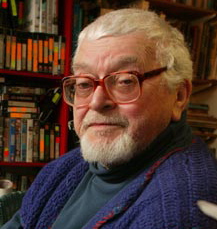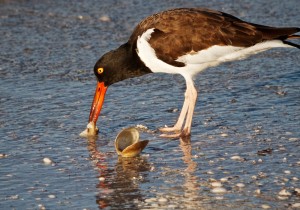“The ends of things are always present in their beginnings…Only a certain number of things can happen and whatever can happen will happen…Oedipus went to Thebes, Peter Rabbit into Mr. McGregor’s garden, but the story is essentially the same: life points only towards the terror. Beatrix Potter left it to John Gould to show us Peter dangling from the beak of Bubo bubo.” –Neaera H.
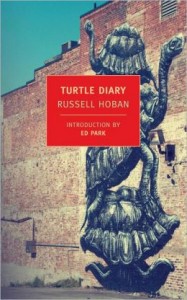 With its quick narrative pacing, its unusual story lines filled with ironies, its wounded characters (appealing, with their vulnerabilities), and the novel’s inherent charm, this newly reprinted novel from 1975 may be the perfect answer for lovers of literary fiction looking for a great book to read on a hot summer day. Russell Hoban is in fine fettle here, creating a novel which raises big questions while focusing on two quiet characters whose lives are about to change in significant ways. The “ends” they have been seeking have been present in their “beginnings,” as the review’s opening sentence (from T. S. Eliot) indicates, though until now these characters have not recognized this, spending their middle aged lives dreaming and second-guessing – while ruing the fact that they have missed their chances for happier, more satisfying lives.
With its quick narrative pacing, its unusual story lines filled with ironies, its wounded characters (appealing, with their vulnerabilities), and the novel’s inherent charm, this newly reprinted novel from 1975 may be the perfect answer for lovers of literary fiction looking for a great book to read on a hot summer day. Russell Hoban is in fine fettle here, creating a novel which raises big questions while focusing on two quiet characters whose lives are about to change in significant ways. The “ends” they have been seeking have been present in their “beginnings,” as the review’s opening sentence (from T. S. Eliot) indicates, though until now these characters have not recognized this, spending their middle aged lives dreaming and second-guessing – while ruing the fact that they have missed their chances for happier, more satisfying lives.
In their separate narratives, William G. and Neaera H. share their often similar lives and thoughts. William G., the divorced father of two, now works in a bookshop and lives in a small room. As the novel opens, he is at the zoo, but he concludes, petulantly, that “I don’t want to go to the Zoo anymore.” He does not like the “dreadful” eyes of the octopus, the “implacable” eyes of the owls, or the “shrill” children “eating things.” The sea turtles in their “grotty little tank no bigger than my room,” affect him a bit differently, however, when he sees them “soaring, dipping, and curving with flippers like wings, in a glass box of second-hand ocean.”
Neaera H., a writer of children’s stories, is sick of writing about Gillian Vole and furry-animal picnics, and has been contemplating using a predator as her next character. As her first commentary opens, she has just purchased a home aquarium, not for fish, but for a Great Water-Beetle, which s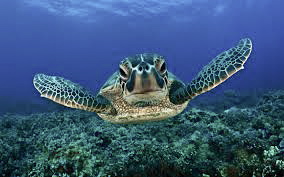 he has ordered by mail. As she pushes her purchases past a TV display, she sees a BBC bird film about the “oyster-catchers” she used to see as a child in Cornwall, “busy making a living with the mussels…a working bird alone in the world,” like her. Summing up her own life, she remarks, “Here I am…forty-three years old, waiting for a water-beetle. My married friends wear Laura Ashley dresses and in their houses are grainy photographs of them barefoot on Continental beaches with their naked children. I live alone, wear odds and ends, I have resisted vegetarianism and I don’t keep cats.”
he has ordered by mail. As she pushes her purchases past a TV display, she sees a BBC bird film about the “oyster-catchers” she used to see as a child in Cornwall, “busy making a living with the mussels…a working bird alone in the world,” like her. Summing up her own life, she remarks, “Here I am…forty-three years old, waiting for a water-beetle. My married friends wear Laura Ashley dresses and in their houses are grainy photographs of them barefoot on Continental beaches with their naked children. I live alone, wear odds and ends, I have resisted vegetarianism and I don’t keep cats.”
Despite his pledge not to return, William goes to the zoo again, and he has enough insight to see the parallels between his life and that of the denizens of the zoo: “There’s a wall inside [me]…Can’t get through anymore.” Again he is touched by the plight of the sea turtles “in the golden-green murk of their little box of sea, their little bedsitter of ocean.” “Coincidentally,” Neaera also visits the zoo and concludes, “The Zoo is a prison for animals who have been sentenced without trial, and I feel guilty because I do nothing about it.” She remarks on the irony of wanting to see an oyster-catcher which someone has captured and caged just so she and others might see it, then notes that her water beetle in its small aquarium has more than twice as much space, relative to its size, as the three sea turtles do in the zoo.
It is not until William meets the Head Keeper and discovers that Neaera has also (“coincidentally”) talked with him that William meets her for the first time to discuss the possibility of releasing the turtles. Even with the Head Keeper of the Aquarium privately agreeing to a plan, however, Neaera is worried. “Sometimes I think that the biggest difference between men and women is that more men need to seek out some terrible lurking thing in existence and hurl themselves upon it like Ahab with the White Whale. Women know where it lives, but they can let it alone…I doubt that there were ever female Beowulfs.” William, in the meantime, actually sees himself as Beowulf but wonders, “Am I doomed?” Still, they both hope to transport the turtles by van from London to Polperro, at the tip of Cornwall, a distance of about two hundred fifty miles.
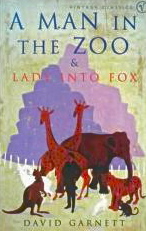
Neaera remembers this book as she thinks about the turtles. In it a man is locked in a cage and exhibited as Homo sapiens.
What follows is no “love conquers all” scenario – Russell Hoban is far too clever an author to resort to narrative clichés. As he and T. S. Eliot have reminded us, “the ends of things are always present in their beginnings,” and by the time these two characters begin their road trip with the turtles, two weeks after devising the plan, they are each beginning to see life in new ways and to think in new directions. Freeing the turtles will be just the beginning. They will never know what happens to the turtles after they are released into the sea, that is not what really matters.
Hoban’s long pre-occupation with supernatural elements takes a much more subtle turn with this novel. Although William G. and Neaera H. will undoubtedly intrigue the reader with their separate lives and thoughts, the number of unusual coincidences and the often parallel thinking of these characters raise the question of whether they are intended to be two incarnations of the same person, or even, more broadly, the yin and the yang. Many readers will undoubtedly have as much fun as I did playing with all these possibilities, which expand the themes and scope while leaving much to the reader’s imagination.
Many literary and musical references throughout the novel are included with an offhand, casual good humor, and usually with great irony. Where else have you ever seen Oedipus Rex and Peter Rabbit sharing the same sentence as it does in the quotation at the beginning of this review, for example? With a lack of pretension about his literary roots, Hoban broadens his scope and themes beyond the lives of his two ordinary and unexciting protagonists (or two incarnations of the same character), making their tentative steps in new directions more fun for the reader to share. With quiet protagonists like these, perhaps the best one can hope for is a comment like this one, made in the conclusion: “Nothing was different or better but I didn’t mind being alive at the moment.” One step forward, at least.
Photos, in order: The author’s photo appears on http://www.guardian.co.uk/
The sea turtle is part of a website devoted to these animals. Double click on the photo or click on this link:
http://www.seaturtles911.org
The oyster catcher, by David Mendosa, is part of a fitness blog by the photographer. For information, click on the photo or on this link: http://www.mendosa.com
Polperro, where the turtles are to be released, is at the tip of Cornwall. Photo from http://en.wikipedia.org
ARC: NYReview Books
